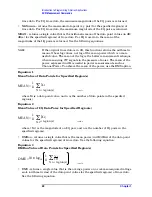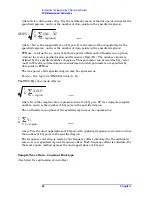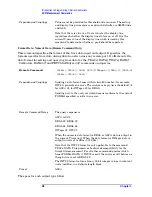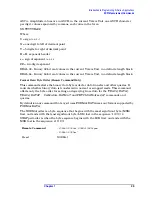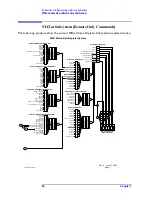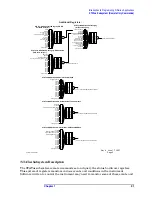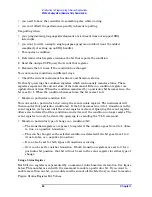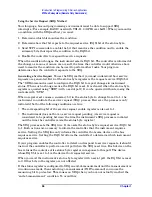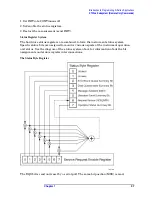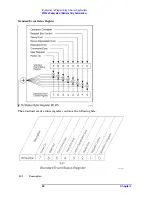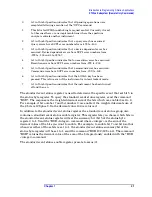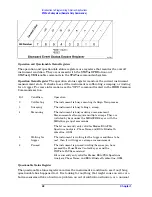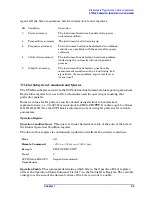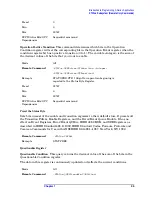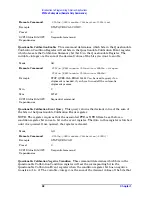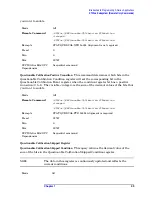
34
Chapter 1
Introduction to Programming X-Series Applications
STATus Subsystem (Remote Only Commands)
• you need to have the controller do something else while waiting
• you can’t afford the performance penalty inherent to polling
Use polling when:
• your programming language/development environment does not support SRQ
interrupts
• you want to write a simple, single-purpose program and don’t want the added
complexity of setting up an SRQ handler
• To monitor a condition:
1. Determine which register contains the bit that reports the condition.
2. Send the unique SCPI query that reads that register.
3. Examine the bit to see if the condition has changed.
You can monitor conditions in different ways.
• Check the current instrument hardware and firmware status.
Do this by querying the condition registers which continuously monitor status. These
registers represent the current state of the instrument. Bits in a condition register are
updated in real time. When the condition monitored by a particular bit becomes true, the
bit is set to 1. When the condition becomes false, the bit is reset to 0.
• Monitor a particular condition (bit).
You can enable a particular bit(s), using the event enable register. The instrument will
then monitor that particular condition(s). If the bit becomes true (0 to 1 transition) in the
event register, it stays set until the event register is cleared. Querying the event register
allows you to detect that this condition occurred even if the condition no longer exists. The
event register can only be cleared by querying it or sending the *CLS command.
• Monitor a particular type of change in a condition (bit).
— The transition registers are preset to register if the condition goes from 0 to 1 (false
to true, or a positive transition).
— This can be changed so the selected condition is detected if the bit goes from 1 to 0
(true to false, or a negative transition).
— It can also be set for both types of transitions occurring.
— Or it can be set for neither transition. If both transition registers are set to 0 for a
particular bit position, that bit will not be set in the event register for either type of
change.
Using a Status Register
Each bit in a register is represented by a numerical value based on its location. See figure
below. This number is sent with the command to enable a particular bit. If you want to
enable more than one bit, you would send the sum of all the bits that you want to monitor.
Figure: Status Register Bit Values



